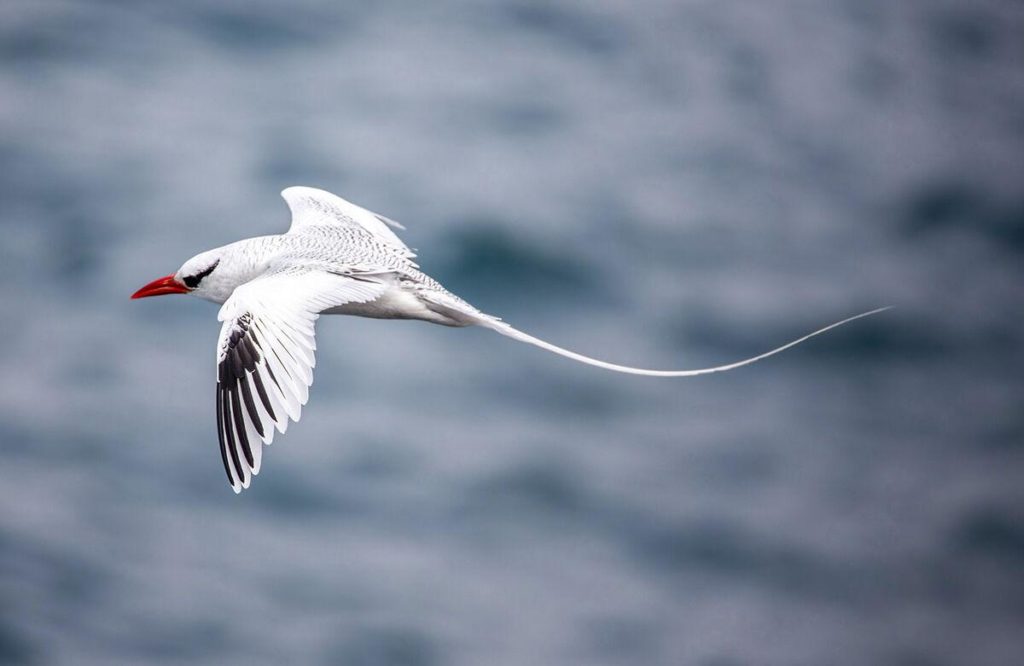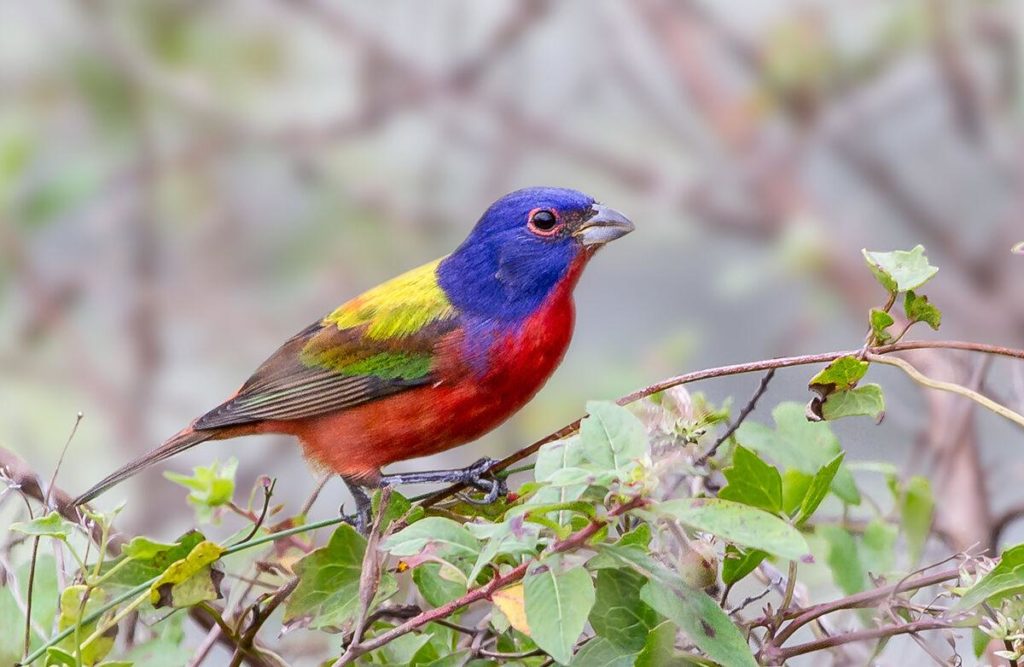By Mike Burke, Bay Journal News Service
Quiz time! In what state would you find an anhinga, roseate spoonbill and painted bunting? Florida? Yes, of course, Florida. But this year if you answered “Maryland,” that would be correct, too.
A male painted bunting kicked off the year with a surprise appearance along the C&O Canal National Historical Park at Great Falls. The bird was quite the sensation, as Bay Bulletin reported.
The adult male painted bunting is one of the most colorful birds in North America. A bright red underside stretches from its chin down to its tail. Equally bright, a blue head and shoulders set up a vivid contrast. He has a green back and additional red on his rump. This bird practically shouts, “Hey, look over here! Take my picture!”
The bunting caused traffic jams outside the park as eager birders lined up for a closer look. He was a rarity, to be sure, but he wasn’t the only one of his species seen in Maryland. In fact, painted buntings were seen in eight other Maryland counties in 2021. These birds are being spotted with increasing frequency in the mid-Atlantic and even farther north, suggesting that they may be expanding their range.
To see a true Maryland rarity, you had to be 150 miles to the east, at the Ocean City Inlet. On Jan. 5, a red-billed tropicbird was sighted there. Birder Suzette Stitely was with three others, checking out the many winter species that use the beaches and inlet, in addition to ocean birds flying by. The small group saw the extraordinary bird, and Stitely captured its image in flight with her Olympus camera and telephoto lens.

The red-billed tropicbird had never been documented in Maryland. Typically, it is found on the sea near its island breeding sites, which are scattered across the south Atlantic, Pacific, and Indian oceans and in the Caribbean Sea. It is mostly brilliant white, with black flight feathers, black streaks behind its eyes, a sturdy red bill and a pair of elegant streamers. Those amazing tail feathers double the length of the bird. In flight, it is simply gorgeous.
Florida sent us a limpkin, too—a medium-size wading bird that is the visual opposite of the bunting and tropicbird. It is heavily streaked brown and white, a cryptic coloring that provides camouflage. The bird has a long, curved bill that is twisted at the end. That unusual feature is an adaptation that allows it to extract snails from their shells. The species specializes in apple snails found in hot, humid freshwater wetlands.
The limpkin ended up out of place in habitat as well as latitude. Fifty miles up the Potomac River from the District of Columbia, it took up residence at Snyder’s Landing in Sharpsburg, MD (site of the 1862 Battle of Antietam). Recorded by a photographer in June, the bird remained in the foothills of the Appalachians through the end of August. It is only the fifth confirmed record of a limpkin in Maryland.
In July at North Beach, near the border of Calvert and Anne Arundel counties, a little egret appeared in the marsh. Looking remarkably like a snowy egret, this diminutive white wader has dull yellow feet, not the bright golden ones of the snowy. The bird is not native to the Americas but is common in Europe, southern Asia, and parts of Africa and Australia. It sometimes appears in the Americas when blown off-course by tropical storms or hurricanes.
Trumpeter swans have been seen in Bay waters sporadically for years during the winter. During their summer breeding season, though, these huge birds are in Alaska and other northern climes, including the western Great Lakes. Yet in the summer of 2021, for the first time, Maryland hosted three breeding pairs. The pair that settled on Hart-Miller Island was the first recorded successful breeding pair, producing three cygnets.
Mississippi kites have been gradually moving their range north. The long-distance migrant typically breeds along the Gulf Coast and its namesake river. These kites selected the city of Rockville for the Maryland honor, becoming just the second recorded successful breeding pair of the species in the state.
A roseate spoonbill, the big, bright pink wader with the spatulate bill, was seen in Maryland in Prince George’s, St. Mary’s and Baltimore counties. Thousands of motorists got a view of the bird when it set down for a few days on a spit of land bordering the Washington beltway near the Woodrow Wilson Bridge.
A wood stork, that prehistoric-looking large wader, also made the trip north from its usual haunts in Florida. Like the painted buntings, wood stork sightings proved plentiful in 2021. The birds were seen in at least five Maryland counties over the summer.
So, what’s going on with all these rare bird sightings so far this year? After breeding, many birds range far and wide. Some of what’s happening is the usual post-breeding dispersal patterns in action. Clearly, other sightings are related to climate change, with southern species moving north in response to warming temperatures. The trumpeter swans may be heading south because of melted tundra. A few birds may be here because of severe weather, which is also related to a warming planet.
The simple fact is that we don’t know why. Other Bay states are having equally exciting years. The pure joy of birding is here. Go outside and see for yourself.




